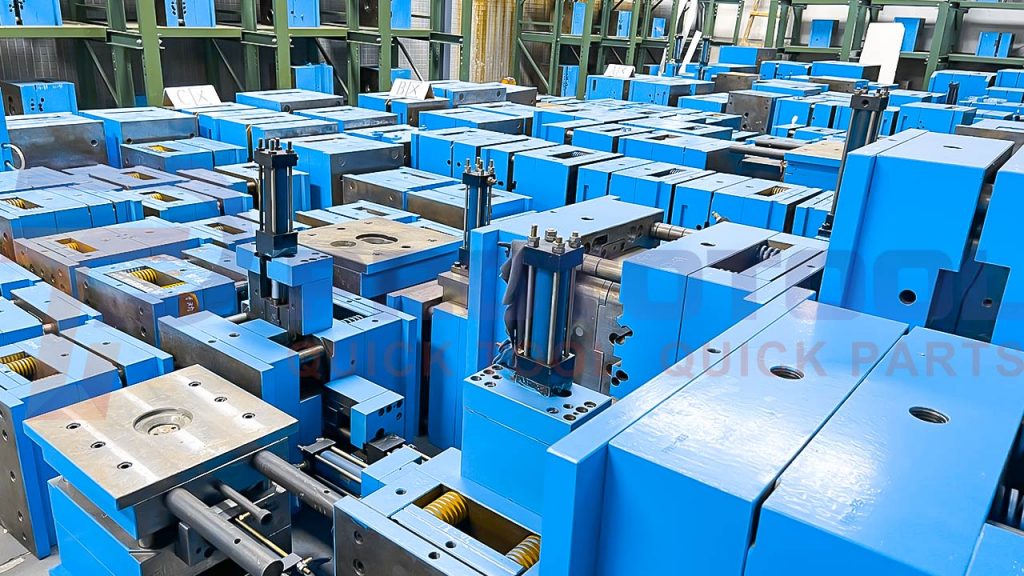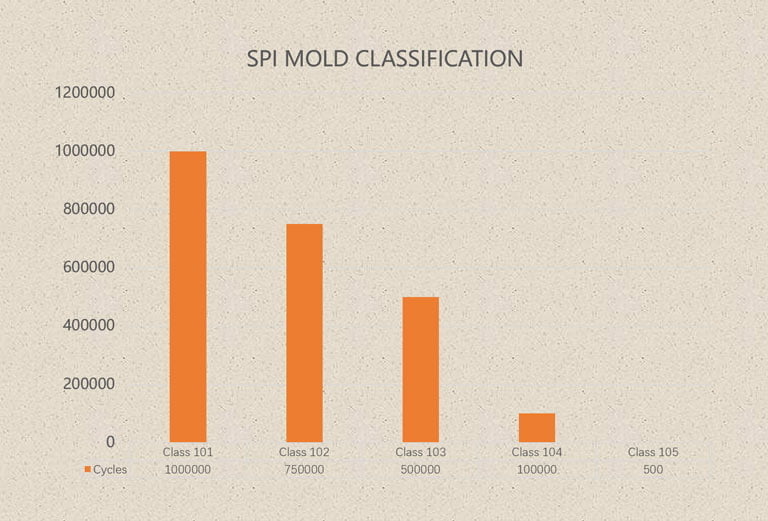The Society of Plastic Industry (SPI) designates 5 key standards for injection molding tooling. These standards help to guide the molding engineers to understand the suitability of the project for an injection molding process. It also helps to gazette the right type of mold to meet the client’s cost, quality, and production volume objectives. Today, there are 5 SPI mold classifications for mold tooling quality and capacity. These classifications help to understand the rigor of operations each mold is suitable for, the volume of parts that can be made from the mold, and the extent of quality that can be expected. Choosing a mold tooling standard relies heavily on the production objective and cost.

Common SPI Mold Classification
The SPI places mold tooling into 5 unique categories. These categories range from Class 101 to Class 105. Generally, class 101 is applicable for the most high-volume operations, while class 105 is reserved for low-volume injection molding demands. Let’s go into more detail.
Class 101 Molds
Class 101 Molds are designed to withstand the rigors of extremely high-volume injection molding operations. These classes of molds can make parts in up to multiple million cycles. It is extremely hard with cavities and cores strengthened above 48 Rockwell. The features of this mold are typically made from hardened tool steel. Class 101 molds are the most expensive mold tooling among the SPI mold classification on the market. At the least, all components of the tool construction must have a minimum hardness of 28 Rockwell.
To lengthen the span of the tool life, ensure that the mold is designed with temperature control, wear panels for slides, parting line locks, and corrosion mitigation – this is because, over the life of the tool, it may lose see increased cooling time as a result of reduced cooling efficiency that arises from corrosion of cooling channels. Class 101 Molds are very expensive and made from only the best available materials. They are often reserved for when companies want to go into full-scale manufacturing.
Class 102 Molds
Class 102 Molds are widely rated for a million cycles of production. The mold is for high-volume production and is very identical to class 101 molds. The essential difference is that class 102 molds do not require guided ejection, plated water lines, hardened sideline plates, and anti-corrosion-plated cavities. Class 102 molds have medium to high output rates and are less expensive than class 101 molds. They are the most common pick for parts that require tight tolerances or those that work with abrasive materials.
Class 103 Molds
Class 103 molds are suitable for production requirements of under 0.5 million cycles. It is recommended to have a proper mold design to buttress quality and capabilities. The cavities and components should have at least 280BHN of hardness, while the other mold features are optional. It is very popular for low to medium production volumes.
Class 104 Molds
Class 104 molds are low-volume production molds that are capable of making no more than 100,000 cycles. They are made from less durable materials like mild steel or aluminum. They do not require a lot of sophistication and are great for limited production parts with less abrasive materials. Their prices fall into the affordable category of mold tooling.
Class 105 Molds
These molds may also be referred to as prototype molds. They are rated for no more than 500 cycles for product designers and experts that want to prototype or test concepts. They may be molded from cast metal, epoxy, or any material that will be able to withstand the rigor of making minimum prototype volumes of 1-500 units. Class 105 molds are built inexpensively to make very low-volume parts.

Prototool Injection Molding Services in China
Prototool offers high-quality thermoplastic injection molding services for all your plastic part projects in China. We also offer low-volume manufacturing that serves small quantities from 50 to 10000 parts and products for mass production (Covers all types in the SPI mold classification). Our engineers are always available to advise on the best processes, materials, and design optimization to ensure cost-savings, quick turnaround, and the production of parts that are 100 percent defect and issue-free. Click here to request a free quote now and submit your design for a free evaluation and contact us on how to get started on your next projects.











